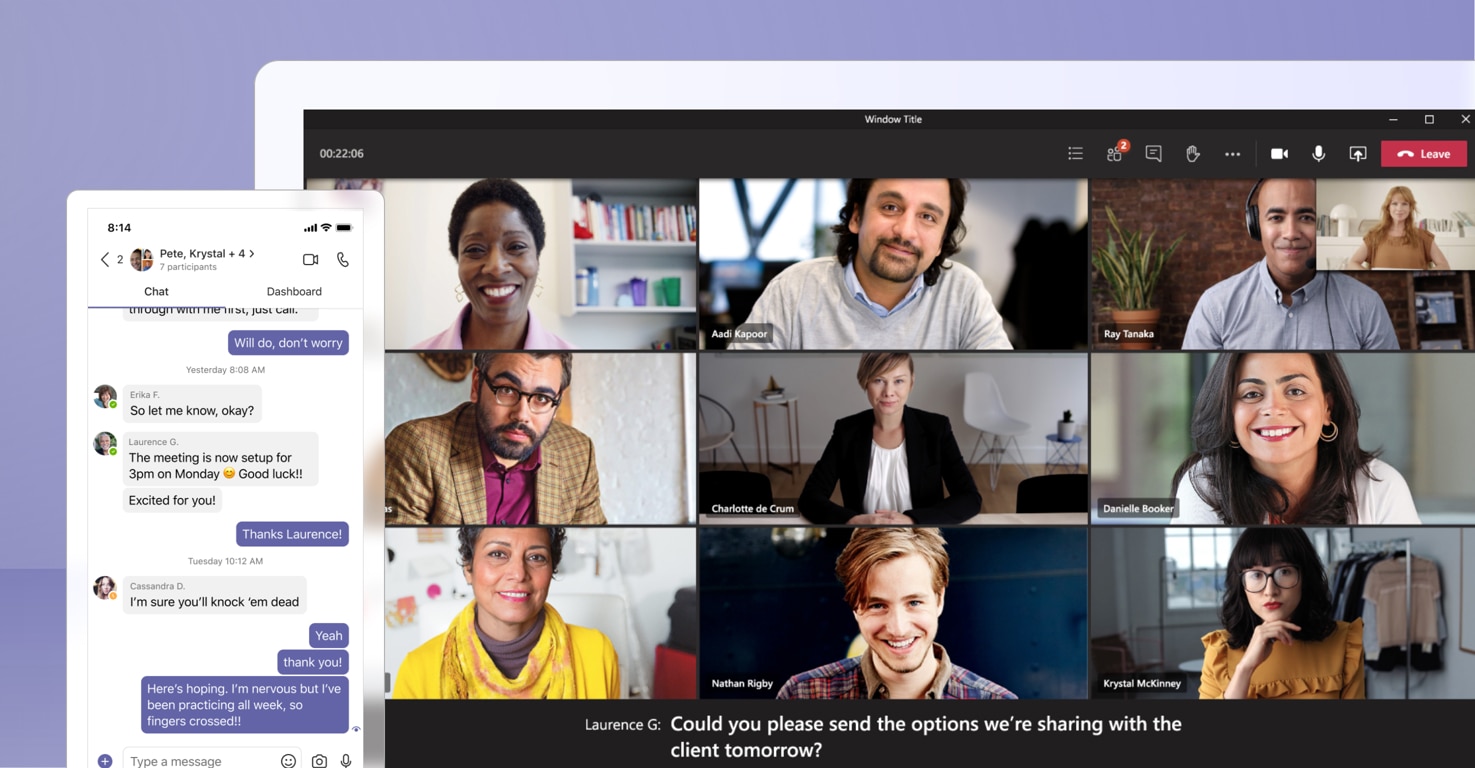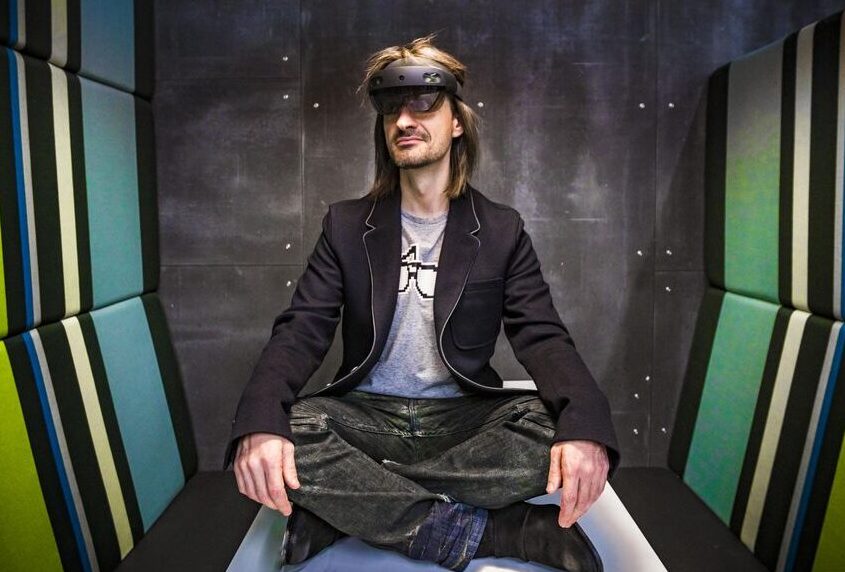Driving under the influence of alcohol is not a defect, but a crime in the modern legal system. Because the negative effect of alcohol on the brain and central nervous system is not open to discussion. Alcohol, which causes a level of unconsciousness that disables driving, can lead the mind to suffer from all kinds of errors. By contrast, even for those who don’t enjoy drinking, it can find a way to infiltrate the body. Cocktails prepared with refreshing, sweet and sour natural fruit mixtures are mostly meant to make consumption more delicious. In the digital age, synthetic reality challenges physical reality with pandemics. Digital transformation, for those who don’t surrender to synthetic reality, plays the cocktail reality trump card.
What we’re trying to explain by the cocktail analogy is hybrid perception, sweetened by adding digital synthetic reality to real-life physical reality. This is called “Mixed Reality”, reflecting the diluted state of perception of physical reality.
Holographic meeting
Digital synthetic reality, taking advantage of the pandemic, enters our lives with mixed reality solutions. In this way, synthetic ingredients bring us together in our own physical environments, holographically. Crossing physical distances, maintaining life face-to-face as before without risking contact, may be attractive to all of us. But when synthetic reality surrounds life and makes perception dependent, what kind of world will we wake up to? How will we be protected from the digital dangers that knock at the door?
Truth virtualization process …
We have come to the digital transformation of reality in a short time, but in stages gradually. Virtual Reality (VR), consisting entirely of synthetic content, was a computer simulation surrounded by 360-degree video. So it was not successful in replacing physical reality. Virtual reality, accessible through VR apparatuses such as the Oculus Rift, HTC Vive or Google Cardboard, could not dissuade mankind from the five senses that have genetic heritage.
Augmented reality (AR), on the other hand, was a transitional solution to connect a person with digital reality without disconnecting them from the physical world. Superimposing or mounting a digital content over physical reality also provided only a fun effect. A period of Pokemon GO madness has engulfed the world. But digital content could not interact with physical objects in the real world. This, in turn, has made augmented reality no more than a prosaic digital experience.
In order to accept synthetic reality, it was necessary to make digital experiences in life more palatable, without breaking people out of real life. This was only possible by making the perception a little drunk, without disturbing the body, and acclimatizing it to artificial reality in a pleasant way.
Microsoft Mesh aims for a holographic universe
Microsoft had promised its users a mixed reality experience in the previous step with the HoloLens 2 glasses it developed. Microsoft Mesh, a mixed reality platform built on cloud service Azure, recently introduced to users. Microsoft’s new Mixed Reality technology, Microsoft Mesh, allows digital content to interact with the physical environment, unlike augmented reality.
Applications using the Microsoft Mesh platform allow users to work together on a holographic meeting and three-dimensional (3D) digital content wherever they are. HoloLens 2 looks like the separators we started wearing on our heads to protect ourselves from Covid 19 new types of coronavirus during the pandemic. HoloLens 2 allows holographic synthetic reality to integrate with objects in the physical reality we live in. You can work with your colleagues, for example, on a 3D car prototype or an architectural project model. You can make changes to the 3D model with physical touches. Microsoft Mesh aims to cover all digital devices developed to date, from smartphones to PCs to virtual and augmented reality glasses, and offer the same experience.
Future version of Microsoft Teams …
Microsoft Mesh is actually seen as the future of the Microsoft Teams platform. Because it brings Microsoft Teams’ online collaboration capabilities to 3D in a holographic format.

In 2017, Microsoft introduced Microsoft Teams, a remote work and distance learning platform that combines video conferencing, chat, meeting, notes, and plug-ins. Microsoft Teams was designed as competitor to Slack, the forerunner of this field. When such platforms were designed, it was as if today’s pandemic conditions had been predicted. Although they were scattered in remote locations, the platforms allowed teams to work together and share all kinds of content with each other in real time, as if they were in the same office.
From the very beginning, the target was holographic teleportation
I wonder if Microsoft Teams was designed as a basic model of Microsoft Mesh? Brazilian software engineer Alex Kipman, best known as the inventor of HoloLens, Microsoft’s first-generation intelligent virtual reality glasses, is not hiding this situation.
/cdn.vox-cdn.com/uploads/chorus_asset/file/22339281/microsoftmesh.gif?w=925&ssl=1)
During the launch of Microsoft Mesh, Kipman makes a holographic visit to Tom Warren, an editor at The Verge, an important representative of US technology media, at his home. Warren wrote of his holographic experience in his essay: “He showed up in my living room to give me Digital jellyfish and Sharks. It may seem to be a strange dream, but it was a meeting made possible through Microsoft’s new Mesh platform. I put on a HoloLens 2, joined a virtual meeting room, and Kipman immediately appeared next to my coffee table.” Journalist Warren cites the experience as “feeling like a Microsoft Teams meeting planned in the future.” Kipman, who was named inventor of the year in the United States in 2012, replies him, “It was a dream of mixed reality that was the idea from the beginning. You may feel that you are in the same place as someone who shares content. You can teleport from different Mixed Reality devices and be with people even if you’re not physically together.”

Holographic social media coming soon…
While digital transformation so accelerating, the question of what’s next comes to mind. It’s not really that hard to predict. It’s enough to put the puzzle pieces together. Microsoft Holoportation is described as a new 3D capture technology developed by Microsoft that allows high-quality 3D human models to be reconfigured, compressed, and transmitted anywhere. In 2017, when Microsoft acquired the VR social network AltspaceVR, the cloud of fog dissipates a little. Moreover, all these developments intersect in 2017. 2017, when Microsoft Teams also became available, was also the first time that the insidious synthetic media type based on artificial intelligence, called “deepfake,” was encountered.
Microsoft Mesh will perhaps initially make users visible with synthetic avatar images on the AltspaceVR social network. However, The Mesh platform will eventually support the technology that Microsoft calls “holoportation.” So people will grow up with holograms that look like themselves on a virtual social platform. This experience will feel much more immersive than the video calls we now have to make in abundance with social media and video conferencing apps like Facebook, WhatsApp, Zoom, Google Meet or Skype.
Do we move away from humanity along with physical reality?
Since we are not yet subject to intensive digitization today, we manage to be relatively protected from synthetic content. And when we can’t resist the temptation of holographic interaction, our connection to physical reality will gradually begin to weaken.
Digital reflections of Mixed Reality may seem very attractive today. But it’s also increasingly clouding consciousness and perception against hyper-realistic deepfake attacks in the near future. In the face of cyber dangers such as disinformation, phishing, fraud through impersonation, and reputation executioner, it makes online users more vulnerable.
Once synthetic reality enters the blood, it will spread viral to society. Microsoft Mesh is perhaps a new era for a digitized society. We wish that as we move away from natural reality, right and wrong, good and evil do not mix, and humanity does not move away from the original enough to need a Messiah…
